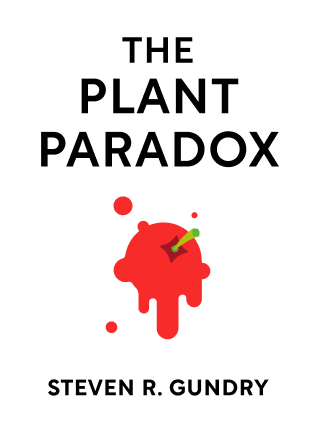

This article is an excerpt from the Shortform summary of "The Plant Paradox" by Steven R. Gundry. Shortform has the world's best summaries of books you should be reading.
Like this article? Sign up for a free trial here .
What is the meaning of lectins? How do you define lectin? What is the role of lectins?
Lectins are large proteins and you can find them in a variety of plant and animal sources. They are a toxin produced by plants as a defense mechanism against predators.
Read more about the meaning of lectins for plants and those who eat them. You will learn to define lectin and the risk of consuming it.
Meaning of Lectins for Plants
Lectins are large proteins contained in the seeds, grains, skins, rinds, and leaves of most plants, as well as in the meat, milk, and eggs of grain- and soy-fed chickens, cows, pigs, and seafood. The meaning of lectins for plants is to allow species to survive.
Just as animals developed defenses against their predators (e.g. skunks spray their attackers and gazelles outrun many predators), plants developed their own methods of protecting their offspring—their seeds—to ensure their species carry on. One method is to produce toxins—including lectins, meaning they poison, paralyze, or disorient predators or make the plant difficult to digest.
The meaning of lectins varies for the type of predator. While lectins may be powerful enough to knock out bugs, humans have a size advantage—but that doesn’t mean we’re immune. We have a massive number of cells, which makes the meaning of lectins and their damaging effects may not be seen until lectins have compounded for years.
Lectins contribute to health problems including weight gain, inflammation, joint pain, diabetes, and autoimmune diseases.
Define Lectins’ Meaning for Humans
Lectins have several harmful effects in your body. Here’s how you define lectins:
- Lectins can create gaps in your intestinal wall barrier.
- Lectins that breach your intestinal wall trigger an attack from your immune system, causing inflammation.
- Lectins—sometimes called “sticky proteins”—bind to sugar molecules in your body and interrupt the communication between cells.
- Lectins mimic certain hormones, fooling the body into taking unnecessary actions like storing fat and attacking certain cells.
- Lectins help viruses and bacteria attach to their intended targets, so that people who are particularly sensitive to lectins are more susceptible to viral and bacterial infections.
Humans have developed a four-pronged protection from plants’ toxins, including lectins.
- Your saliva and the mucus in your nose contain sugars, which lectins naturally bind to. Those sugars are meant to trap the lectins before they reach your digestive system.
- Your stomach acid also digests certain—but not all—lectin proteins.
- The natural bacteria in your mouth and gut help consume lectins before they can interfere with your cells and create gaps in your intestinal wall barrier.
- An additional layer of mucus that lines your intestines acts as a final line of defense to trap lectins and prevent them from interfering with your intestinal wall.
Although this system is designed to protect us from the harmful effects of lectins, if we consume too many lectins, they can overwhelm our natural defenses.
The Human Diet Is Overloaded With Lectins
For millennia, humans’ immune systems have adapted to their changing diet, but relatively recently, humans’ diets have changed drastically and exposed our gut bacteria to new compounds that it hasn’t yet evolved to tolerate, making the meaning of lectins more pronounced.
There are four factors in how we define lectins that brought about this major change.
- The Agricultural Revolution not only introduced grain and beans into the human diet for the first time, but it also made them the primary food source; this was a shift from a diet of mainly leaves, tubers (like sweet potatoes), and some animal fat and proteins.
- A mutation in Northern European cows caused them to produce a different kind of protein in their milk, called casein A-1; during digestion, casein A-1 turns into a protein similar to lectin that causes your immune system to attack your pancreas.
- When Europeans landed in the Americas, they brought foreign food from the New World back with them that people in Europe, Asia, and Africa had never before been exposed to and, thus, hadn’t adapted to tolerate. These included
- The nightshade family, including tomatoes, potatoes, eggplants, and peppers
- The bean family, including peanuts and cashews
- Grains
- Pseudo-grains, including quinoa
- The squash family, including pumpkins, acorn, squash, and zucchini
- Chia and some other seeds
- The rise of processed food and genetically modified organisms (GMOs) has introduced a whole new array of lectins that our bodies haven’t adapted to tolerate. At the same time, humans are being exposed to chemicals that destroy certain gut bacteria that would’ve otherwise helped us process some of these lectins. As a result, we’re less able to process lectins at the same time we’re consuming them more heavily than ever before.
Protect Your Gut Bugs
You have about five pounds’ worth of microbes—bacteria, protozoa, fungi, molds, viruses, and worms—in your intestines, on your skin, and in the air around you, collectively making up your holobiome. Microbes live and feed on you, but your well-being also depends on them.
The microbes in your gut have several functions:
- Break down and digest food
- Help you absorb food’s energy and nutrients
- Alert your immune system to invaders
- Prevent objects (like lectins) from breaching your intestinal wall to get into your bloodstream, organs, and other areas of your body
- Communicate with your brain and body to control your hormones, appetite, cravings, and other functions
There are good and bad microbes: Good microbes want to keep you healthy because not only do you need them for your well-being, but they also need you. On the other hand, bad microbes hijack the communication between your gut and your brain and drive you to crave sugars, fats, and unhealthy foods that nourish them but harm your health. Good microbes help to break down lectins, but when they’re weakened or wiped out, bad microbes can take over and let lectins run rampant. This is part of the meaning of lectins.
Avoid Disruptors
There are seven major disruptors that alter your holobiome, throw off your body’s internal clock, and make you more susceptible to lectins:
- Broad-spectrum antibiotics, such as Augmentin, Cipro, and Amoxil
- Nonsteroidal anti-inflammatory drugs (NSAIDs), including Advil, Motrin, ibuprofen, Aleve, Naprosyn, Mobic, Celebrex, and aspirin
- Stomach-acid blockers, such as Pepcid AC and Zantac
- Artificial sweeteners, such as Splenda, Sweet’n Low, and Equal
- Endocrine disruptors (chemicals in a range of products from processed foods to cosmetics to mouthwash)
- Roundup weedkiller
- Blue light in electronics

———End of Preview———
Like what you just read? Read the rest of the world's best summary of Steven R. Gundry's "The Plant Paradox" at Shortform .
Here's what you'll find in our full The Plant Paradox summary :
- Why eating more vegetables isn't enough, and why some vegetables are toxic to your body
- The science behind lectins and how they tear apart your body, making you fat and sick
- The 6-week program to get your body back on healthy grack






